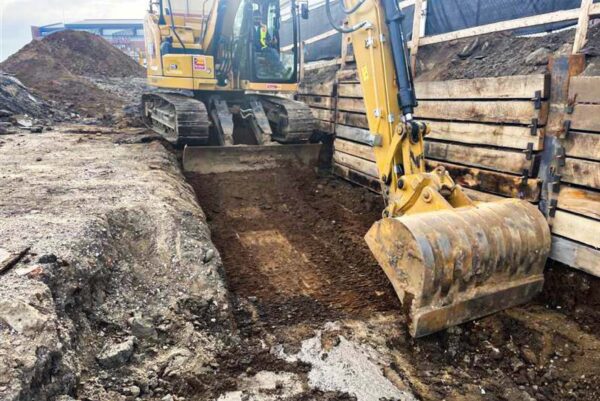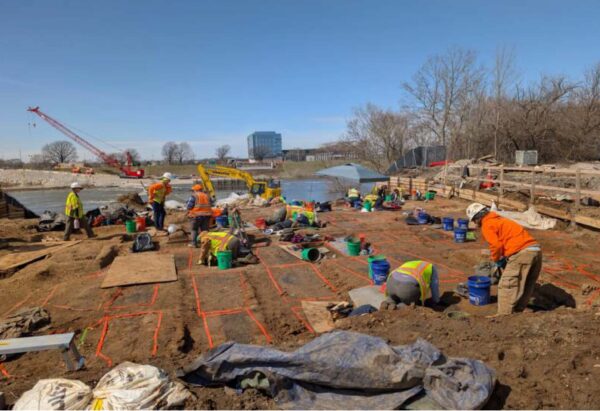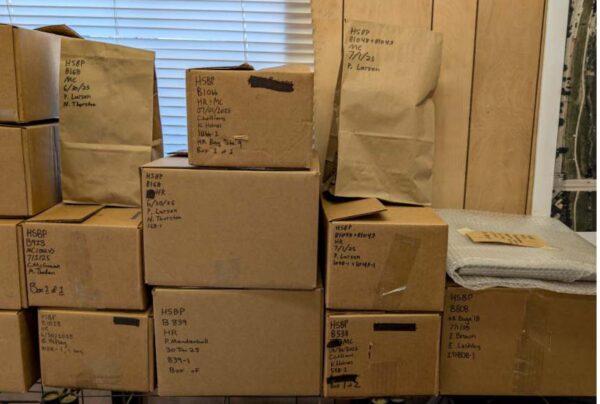Archaeology
The Henry Street Bridge project is within and adjacent to the site of Indianapolis’s first public cemeteries. The Original Cemetery, or Old Burying Ground, was established in 1821; the Union, or New Burying Ground, was created in the 1830s; the North, or Peck’s, Burying Ground was established in the 1850s; and the last section, Greenlawn Cemetery, was created in the 1860s. Because the project is within and near the site of the former cemeteries, archaeology is an important element of the Henry Street Bridge project. An accomplished team of professionals – including researchers, archivists, historians, archaeologists, and bio-archaeologists – has completed the excavation and is analyzing the contents of the grave shafts. These individuals:
- Hold advanced degrees in their respective fields
- Bring years of experience in Indiana and Indianapolis history
- Have experience in excavating burials in various settings
- Include a local researcher who has spent years studying the history of the former Greenlawn Cemetery
- Include an expert in exhuming African American burials
According to the Monitoring Plan, human remains, burial objects or grave markers encountered must have been reported to the Indiana Department of Natural Resources//Division of Historic Preservation & Archaeology (IDNR/DHPA) within two business days as required by Indiana Code (IC) 14-21-1-27 and 29. After inventory and analysis, recovered human remains and all burial objects and associated items will be stored in a safe and secure facility until proper re-interment in an appropriately dedicated cemetery. The re-interment area will be appropriately recorded, identified, and marked.
*The information on this website is only intended to be general summary information to inform the public of the status of the archaeology at the relevant site. The information on this site should not be used for any purpose beyond general, informational purposes. The information on this site is believed to be accurate as of the date it was added to the website. As new information is learned over the course of the archaeology and subsequent research, the information on this site may change or become outdated and is subject to change without notice. This information does not have the force or effect of written law or regulation.



